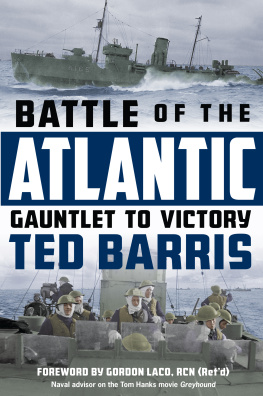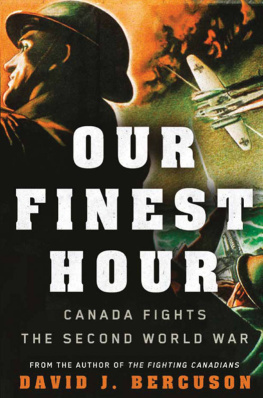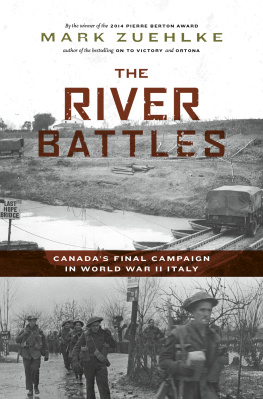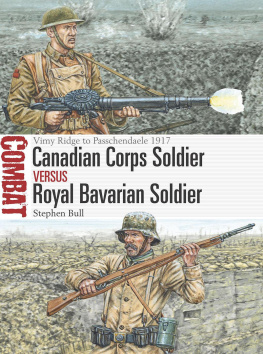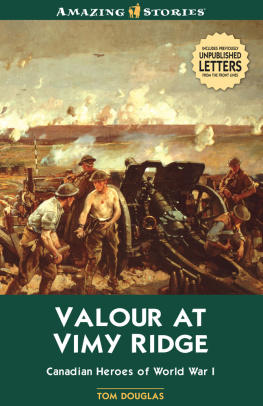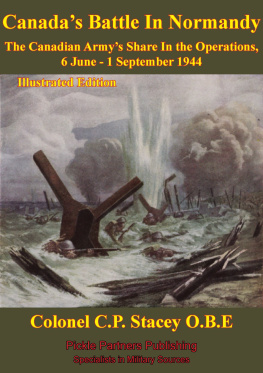
INTRODUCTION
O N 29 OCTOBER 1813, dans le bois en haut de la rivire Chteauguay, Lieutenant Colonel Charles-Michel dIrumberry de Salaberry wrote to his father about un vnement fort extraordinaire. Three days earlier, Salaberry had led a force consisting of fewer than 500 militia to victory over more than 4,000 American regulars. The Battle of the Chteauguay, as the clash became known, was one of the most significant of the War of 1812. Salaberrys great triumph shocked the republic to the south and put an end to their ambitions concerning Montreal. The capture of the city, so crucial to the American effort, would forever remain beyond their grasp.
The Battle of the Chteauguay was part of a conflict which began when the United States declared war on the United Kingdom of Great Britain and Ireland and the Dependencies Thereof . British North America provided the settings of many of the conflicts greatest battles. Those living on the soil of what would one day become the Dominion of Canada were expected to fight for their mother country, just as they had in the Seven Years War, and just as they would in the Second Boer War and the First World War. The identity of the mother country was dependent entirely on the time. As his father had done during the American War of Independence, Salaberry fought for the British against the armies of the United States of America. Yet, Charles-Michel dIrumberry de Salaberrys grandfather served as lieutenant commander of the French frigate Fidle fighting Great Britains Royal Navy at the Battle of Louisbourg.
The hero of the Battle of the Chteauguay considered himself Canadian, as did the men who were under his command. In fact, the battle was the largest of the war to have been fought exclusively by those who had been born in what would 54 years later become the Dominion of Canada. Many of those who defended British North America in the War of 1812 were British regulars. Indeed, some of the great battles in pre-Confederation Canadian history, events of significance and ramification, were fought, in the main, by foreign soldiers. Beginning with the fin de sicle Second Boer War the situation reversed. In that war and all that followed, it was the Canadians who were the foreign soldiers fighting overseas.
Any study of military conflict is also a lesson in history. The battles included in this book reflect the ever-changing geopolitical landscape. It is in this environment that the Salaberry family switched its allegiance from France to their old enemy the British. The United States of America, for more than a century a threat to Canadians, would become an ally in the First World War, the Second World War, the Korean War, the Gulf War and the war in Afghanistan.
The Canadians fighting at the Battle of the Chteauguay numbered fewer than 500, and yet their actions altered the course of the histories of both Canada and the United States, testimony that a battle need not feature large numbers of soldiers to prove itself influential and significant. Indeed, several of these great Canadian battles were little more than skirmishes, lasting no more than minutes, causing no real damage or destruction. At this distance, some, such as the Battle of Montgomerys Tavern, might appear comical were it not for the loss of life, however small that number.
Led by a newspaperman and fought in a provincial capital, The Battle of Yonge Street is fairly well documented. The same cannot be said of every engagement, no matter how significant. The only first-hand account of the Battle of Lake Champlain fewer than 300 words was penned by Samuel de Champlain, the very man to first use firearms in warfare against the First Nations. Of earlier Canadian battles we must rely, for the most part, on archaeologists and the narratives of native storytellers.
Great bravery, victory and loss provide strong threads from which legends are woven. Thus, while the Battle of Yonge Street has been relegated to history books, the battles of the Plains of Abraham, Queenston Heights and Vimy Ridge have taken their places in the Canadian psyche and culture. Other great stories of heroism, such as Salaberrys victory at the Chteauguay river, have never been properly recognized. This is, perhaps, too modest a country.
Edward Humphreys
CHAPTER I
The Wars of New France
THE WARS of NEW FRANCE
An introduction
T HE HISTORY OF New France is not a peaceful one; its survival was accompanied by conflict and death. Seeking trade and security for their tenuous settlements, the earliest French settlers soon found themselves caught in the midst of ongoing tribal warfare. Samuel de Champlains reliance on the Algonquian-speaking tribes brought an alliance which would lead to war with the rival Iroquois Confederacy.
During the first half of the 17th century the French and Iroquois War came very close to destroying New France. It lasted until the Great Peace of Montreal, a peace treaty signed after 92 years of war by Governor Louis-Hector de Callire and more than 1,200 representatives of 39 First Nations.
By necessity, New France was a militarized society. Its few significant settlements Quebec, Montreal, Trois-Rivires, Port-Royale and Louisbourg were surrounded by fortifications. For much of its history, it required that its Canadian males, aged 16 to 60, join militia companies and be trained in the art of war.
As France expanded its territory in North America, so too did Great Britain. By the middle of the 17th century, competing claims led to small skirmishes and, on occasion, bloodshed. However, the first North American war between the French and the British King Williams War was not the result of territorial aspirations, but conflict in Europe. In fact, King Williams War was nothing but a name used by the colonialists of New England in reference to the North American theatre of the War of the Grand Alliance. Fought from 1689 until 1697, King Williams War resulted in the deaths of several hundred people, a great many victims of massacre.
Early in the fighting, the British captured Port-Royale. Though it was held without challenge for the balance of the war, the capital of Acadia was returned to the French through the Treaty of Ryswick. Thirteen years later, during Queen Annes War (the North American branch of the War of the Spanish Succession), the town was again captured. At the end of the conflict, with the signing of the 1713 Treaty of Utrecht, France lost peninsular Nova Scotia, Newfoundland and its territory around Hudson Bay. After 27 years of peace, the longest in its history, in 1740 New France entered into King Georges War, an eight-year conflict that was part of the War of the Austrian Succession.
There followed six years of peace before New France began fighting what would be its ultimate war. Unlike the others, the Seven Years War began prior to the larger European conflict with which it became attached. More than 8,000 nearly one in seven of New Frances 60,000 citizens served; casualties amounted to more than 2,000.
By the time of the Treaty of Paris on 10 February 1763, in which New France was brought to an end with the ceding of nearly all of Frances North American territory to Great Britain, the colony had been at war for 37 of its last 74 years.
THE BATTLE of LAKE CHAMPLAIN
30 JULY 1609
A N EXPLORER, navigator and gifted carto-grapher, Samuel de Champlain is remembered above all as the Father of New France. By founding Quebec City on 3 July 1608, he secured French dominance of the Saint Lawrence river
Next page


